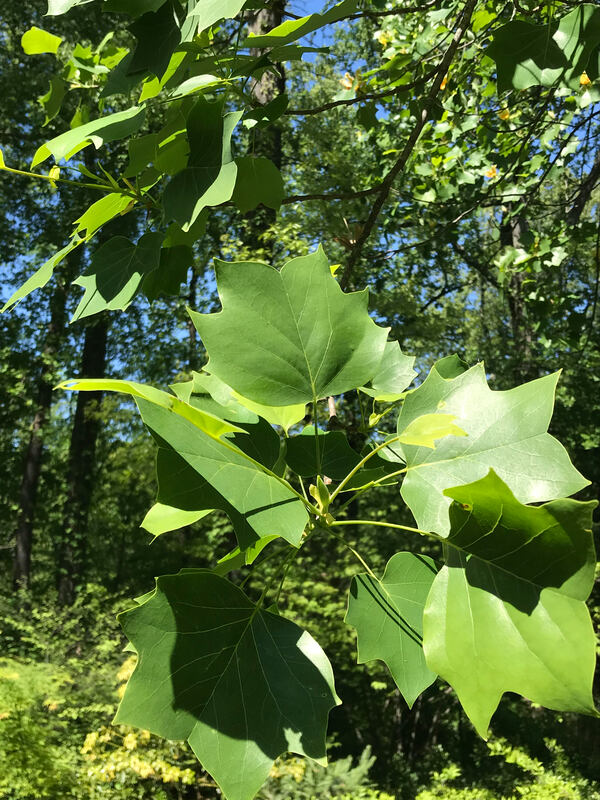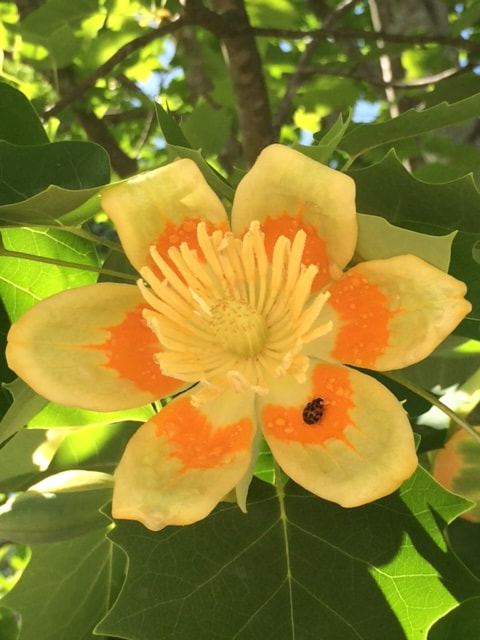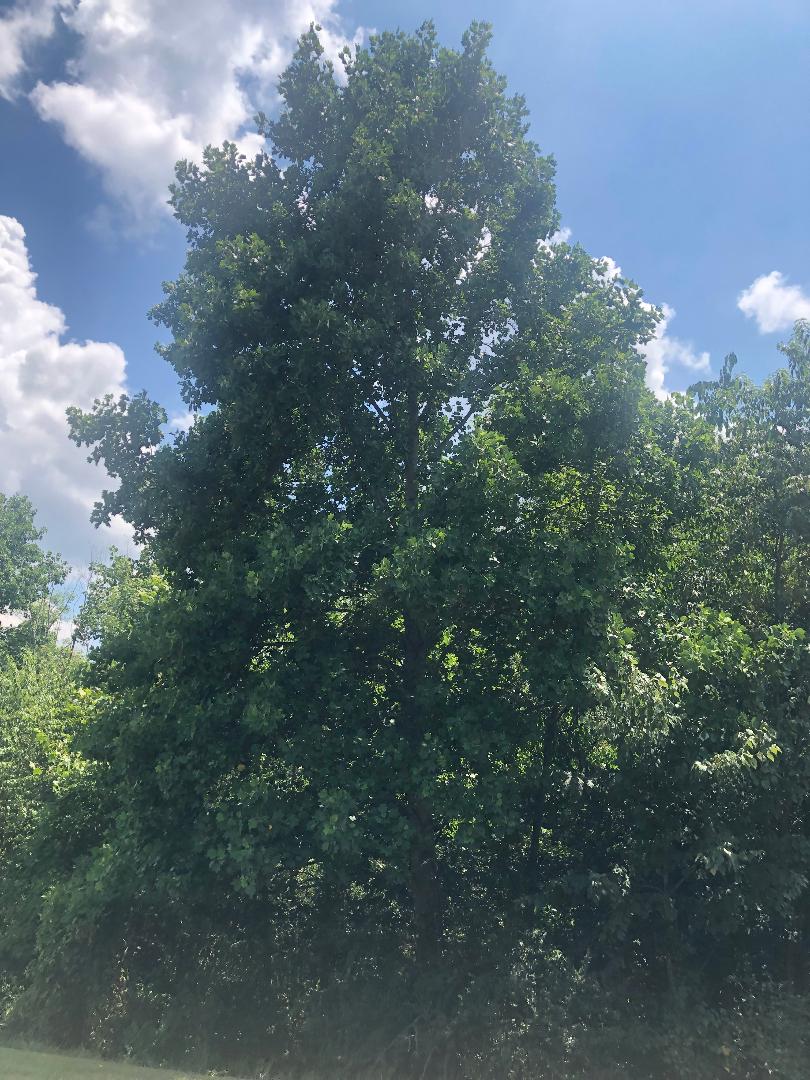The Unusual Magnolia: The Tulip Tree
By: Julian B
Age: 16
Atlanta, Georgia USA
By: Julian B
Age: 16
Atlanta, Georgia USA
Trees are a special and diverse variety of plants. As of 2022, there are over 70,000 various tree species in the world (Cazzolla Gatti et al.). These tree species are a part of broader categories depending on their common characteristics. One of these categories is Magnolia. Magnolias can be evergreen and keep their foliage throughout the season, or they can be deciduous and shed their leaves annually. These trees are commonly identified by their glossy, curved-like foliage and creamy spring-summer blooms. However, one magnolia has a unique nature. It is called Liriodendron Tulipifera, commonly known as the tulip tree. The tree is frequently mistaken as being a part of the tulip family due to its common name, however the tree is truly a part of the magnolia family. Despite its interesting qualities, many people are oblivious to the many aspects and overall significance of the tulip tree.
Tulip trees have numerous unique characteristics that distinguishes it from other trees. These trees are native to the east coast of North America (Russell et al. 54). Tulip trees are notorious for their lofty size as they can grow up to 90 feet (“Tuliptree Tree on the Tree Guide at Arborday.Org”). Their foliage is not like a typical magnolia. Rather than having glossy and ovate leaves, Tulip Trees have 4-lobed leaves with a notched tip almost resembling a crown. Their leaves also have very refined colors that range from green to light mint color. Tulip trees will typically bloom around late spring and early summer (Lockridge). Those lucky enough to admire their flowers will witness a captivating flower with distinct features. Tulip tree flowers have a creamy, yellowish color with an orange streak along the petals. Their flowers are also bisexual meaning that they have male (stamen) and female (pistil) features to encourage seed formation.
Tulip trees have numerous unique characteristics that distinguishes it from other trees. These trees are native to the east coast of North America (Russell et al. 54). Tulip trees are notorious for their lofty size as they can grow up to 90 feet (“Tuliptree Tree on the Tree Guide at Arborday.Org”). Their foliage is not like a typical magnolia. Rather than having glossy and ovate leaves, Tulip Trees have 4-lobed leaves with a notched tip almost resembling a crown. Their leaves also have very refined colors that range from green to light mint color. Tulip trees will typically bloom around late spring and early summer (Lockridge). Those lucky enough to admire their flowers will witness a captivating flower with distinct features. Tulip tree flowers have a creamy, yellowish color with an orange streak along the petals. Their flowers are also bisexual meaning that they have male (stamen) and female (pistil) features to encourage seed formation.
Close up of the Tulip Tree Leaves and Tulip Tree Flower
Photo Credit: Lorin Boren
Photo Credit: Lorin Boren
Because Tulip trees are common trees in the Americas, many people have utilized some of its attributes to improve the quality of their lives. For the tulip tree, the most employed aspect is the bark and wood. Tulip tree wood is popular in the timber industry. This is because it has qualities such as shock resistance, and firmness which makes it desirable for building structures and household appliances (American Hardwood Export Council). Just like how tulip tree is known for its physical characteristics, tulip tree bark is also useful for its medicinal properties. The bark was used as a traditional remedy for ailments such as rheumatism and dysentery (Medicinal Herb Info). In fact, Native Americans utilized tulip tree bark to make tonics and teas to treat parasitic infections (Medicinal Herb Info). People do not think of the tulip tree as being a full course meal; on the contrary, almost all parts of the tulip tree are edible. The leaves can be a tasty addition to salads and soups and add a nutty spice to meals (Opiatalk). Another edible aspect of this tree is the roots. Compounds found within the tulip tree roots act as lemon flavorings for beverages such as spruce beer (Sylvia). As well as adding flavoring, tulip tree roots may also help to enhance the sweetness and remedy the bitterness of beer (Sylvia).
Not only does the tulip tree provide resources to humans, but the tree is also an important part of the ecosystem. The seeds and seedlings of the tulip tree provide nourishment to a myriad of wildlife including, deers, rabbits, finches, and mice. Moreover, tulip trees are also very popular among bees. This is because their flowers produce a substantial amount of nectar and pollen to aid in honey production (Backyard Ecology). In addition to providing food to a variety of organisms, the tulip tree also acts as a host plant for some species of butterfly. The most notable example is Georgia’s state buttery, the Eastern Tiger Swallowtail. During the caterpillar stage of their life, the Eastern Tiger Swallowtail feeds on the tulip tree leaves and depends on it for shelter, and protection
As demonstrated, the tulip tree is a beneficial and influential plant present in our world. This tree is aesthetically pleasing, can improve our health, and positively impacts the ecosystem. The tulip tree personally interested me due to its elegance and profound presence in my region. Since my first encounter with this tree, I have been able to identify it in many areas and provide knowledge about the tree to friends and family. Additionally, the tulip tree has kickstarted my interest in learning more about trees and the essential roles they have in the world. As of now, I do not think there is a tree that is as extraordinary as the tulip tree.
Not only does the tulip tree provide resources to humans, but the tree is also an important part of the ecosystem. The seeds and seedlings of the tulip tree provide nourishment to a myriad of wildlife including, deers, rabbits, finches, and mice. Moreover, tulip trees are also very popular among bees. This is because their flowers produce a substantial amount of nectar and pollen to aid in honey production (Backyard Ecology). In addition to providing food to a variety of organisms, the tulip tree also acts as a host plant for some species of butterfly. The most notable example is Georgia’s state buttery, the Eastern Tiger Swallowtail. During the caterpillar stage of their life, the Eastern Tiger Swallowtail feeds on the tulip tree leaves and depends on it for shelter, and protection
As demonstrated, the tulip tree is a beneficial and influential plant present in our world. This tree is aesthetically pleasing, can improve our health, and positively impacts the ecosystem. The tulip tree personally interested me due to its elegance and profound presence in my region. Since my first encounter with this tree, I have been able to identify it in many areas and provide knowledge about the tree to friends and family. Additionally, the tulip tree has kickstarted my interest in learning more about trees and the essential roles they have in the world. As of now, I do not think there is a tree that is as extraordinary as the tulip tree.
|
Bibliography
American Hardwood Export Council. “American Tulipwood.” American Hardwood, https://www.americanhardwood.org/en/american-hardwood/american-tulipwood Backyard Ecology. “Tulip Poplar (Liriodendron Tulipifera).” Backyard Ecology, 11 Sept. 2020, www.backyardecology.net/tulip-poplars-a-source-of-abundant-nectar-and-pollen-for-kentucky-pollinators. Cazzolla Gatti, Roberto, et al. “The Number of Tree Species on Earth.” Proceedings of the National Academy of Sciences, vol. 119, no. 6, 2022. Crossref, https://doi.org/10.1073/pnas.2115329119. Lockridge, Diane. “How to Care for Tulip Trees.” Dengarden, 20 June 2022, dengarden.com/gardening/How-to-Care-for-Tulip-Trees. Medicinal Herb Info. “Tulip Poplar.” Medicinal Herb Info, 3 Aug. 2021, medicinalherbinfo.org/000Herbs2016/1herbs/tulip-poplar. Opiatalk. “Are Tulip Poplar Leaves Edible?” Opiatalk, 19 Jan. 2021, opiatalk.com/are-tulip-poplar-leaves-edible. Russell, Tony, et al. Trees an Illustrated Identifier and Encyclopedia. 1st ed., Anness Publishing, 2022. Sylvia. “Tulip Tree Facts and Health Benefits.” Health Benefits | Health Benefits of Foods and Drinks, 16 Nov. 2018, www.healthbenefitstimes.com/tulip-tree. “Tuliptree Tree on the Tree Guide at Arborday.Org.” Arbor Day Foundation, www.arborday.org/trees/treeguide/treedetail.cfm?itemID=930#:%7E:text=Mature%20Size,of%20around%2040’%20at%20maturity. |
Tulip Tree
Photo Credit: Julian B |
Editor's note
Wildlife In Spotlight collaborated with ten students who attended the Summer High School Leadership Summit at the Atlanta Botanical Garden. As part of Julian's seven-week program, he had to research, write and present on a plant of his choice. He met with horticulturists, conservationists and other experts to explore the Garden's collections and gather information to write his article. Students were encouraged to select plants that not only interested them, but also had ecological, ethnobotanical, or economic value.
Many thanks to Lorin Boren, School Program Assistant Manager, Atlanta Botanical Garden for coordinating and facilitating this partnership!
Wildlife In Spotlight collaborated with ten students who attended the Summer High School Leadership Summit at the Atlanta Botanical Garden. As part of Julian's seven-week program, he had to research, write and present on a plant of his choice. He met with horticulturists, conservationists and other experts to explore the Garden's collections and gather information to write his article. Students were encouraged to select plants that not only interested them, but also had ecological, ethnobotanical, or economic value.
Many thanks to Lorin Boren, School Program Assistant Manager, Atlanta Botanical Garden for coordinating and facilitating this partnership!


